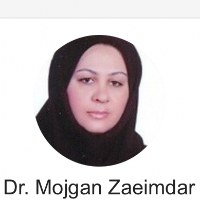Evaluation of urban transportation system in crisis with using TRANSCAD (Case Study: City of Isfahan)
The urban transportation system is one of the most important and sensitive infrastructures of urban development, which requires special attention for its development and exploitation. Urban transportation is known as one of the biggest infrastructural challenges facing big cities. During the occurrence of incidents such as floods, storms, tsunamis, terrorist operations, the role of the road network in traffic, transportation and relief will be much more prominent and vital than in normal conditions. As a result of these incidents, the transportation infrastructures suffer fundamental problems, in the provision of service or total failure, their vulnerability analysis is very important. The vulnerability of the transportation network includes terrorist attacks and natural disasters, which reduce the service level of the transportation network. All these events are considered unusual events, which happen in the transportation network with different possibilities, and the consequences of their occurrence are also different.Accidents, from the point of view of vulnerability in the transportation system, are those events that cause disruption in traffic. These events can be natural, sudden, and unpredictable, such as severe adverse weather or terrorist activities, all of which affect network performance. The common feature of all these incidents is that they all cause negative effects on the service of the road network. In other words, an incident is an event, which directly or indirectly causes a significant decrease in the service of an arc/route/road in the network. The purpose of this study is to evaluate the urban transportation system using Transcode software in the urban road network from the point of view of crisis management during evacuation.
The current research is descriptive and analytical in terms of its methodology and in terms of purpose, it is practical-developmental. In this research, based on the modeling of the transportation network in Transcode specialized software, a method for prioritizing the role of roads in the urban road network during evacuation is proposed. For this reason, the travel time of the entire network has been used as a measure to determine the efficiency and effectiveness of the transportation network. Considering 16 scenarios, the demand matrix was obtained for the discharge conditions of Isfahan's transportation network, using the gravity model, with one limitation. Then, traffic allocation was done using Transcode software, and according to the mentioned process, the designated routes; respectively removed from the network and the allocation process was done. 30% of the city's population is considered to determine the number of people who travel out of the city every hour. According to the population and housing statistics of 2016, the average household population in urban areas is about 3.5 people.In this research, first, the shortest routes between origins and destinations were calculated using TransCAD software, and origin-destination matrices were created based on 30% of people who intend to leave the city during the crisis. Then the outputs were removed from the network, respectively, and the traffic allocation process was done using software; In order to perform traffic allocation, limited software’s are used, and in this study, TransCAD 4.5 software was used, which is one of the most updated and famous specialized software’s for transportation engineering. To perform traffic allocation, using TransCAD software, it is necessary to introduce the road network, the origin-destination demand matrix, and then the performance function to the software, and after that, the software performs the allocation operation, and the outputs, it includes the balance flow of each arc in each direction, the travel time of each arc in each direction, the ratio of volume to capacity of each arc and etc.In order to implement this process, first the passages and their intersection points are called in the software environment; Then, the transportation network and its characteristics will be defined; At this stage, the centers of the traffic areas, the status of inactive or blocked roads, the status of circulations at the crossing points of the roads, etc. will be determined. In the next step, the construction of the source-destination matrix will be done at the time of the crisis, in which the population parameters of the districts, the distance of each district to the exit destinations of the city, and the number of people who will be sent to the exit points every hour will be done., is used.After this stage, it comes to the traffic allocation process, in which, using the travel time-volume functions, which are built based on the characteristics of the roads, people's trips will be allocated through different routes from their origins to their destinations found, and the traffic volume of each passage will be determined.
The allocation results showed that exit 3657 (Nain Road) has the most time spent in the entire transportation network, in one hour, and using a 30% matrix, compared to the base scenario. Also, the outlets were ranked in terms of the total length of the arcs, with a volume exceeding the capacity, and twice the capacity, and it was determined that the outlet 4639 (Azadrah Zob Ahan) is in the first place. The scenarios were ranked based on the cost of traffic facilities and services, in millions of Rials per hour (30% matrix), and it was found that scenario 4639 (Zob Ahan Freeway) ranked first, and scenario 2003 (Zainbiye Boulevard (Habib Abad Road)) ranked last.
This study showed that, when a crisis occurs, there is access to transportation for the residents of Isfahan metropolis, which in order of time spent, the Nain road exit scenario shows the most time spent compared to other scenarios, and the residents of the city can use outputs that have less time spent than other outputs in the network. Finally, suitable solutions for use in the field of urban transportation were presented; these solutions include:- Preventing the blocking of standard and safe exits, to evacuate the population and timely arrival of relief forces, in times of crisis. It is possible to use a similar method to identify parallel routes in order to provide relief services or evacuate the population in the city of Isfahan. Considering the appropriate emergency evacuation route for crowded places, such as subway stations, passenger terminals, uneven intersections, underground tunnels, etc. Determining and equipping emergency evacuation routes, as well as alternative routes, for routes that are likely to be damaged, for the rapid evacuation of the city population, and its different areas, with logical methods, and testing it by conducting appropriate maneuvers to educate citizens. Informing, educating the public and conducting appropriate maneuvers to train citizens for emergencies with a relatively realistic simulation of specific threats.
-
Innovative Hybrid Algorithm for Solving Vehicle Routing Problem with Time Window
A.M. Rahimi *, B. Yadegari, M. Aboutalebi Esfahani
Sharif Journal Civil Engineering, -
تجزیه وتحلیل شدت تصادفات استان چهارمحال و بختیاری با استفاده از تکنیک یادگیری ماشینی و پیاده سازی شبکه تحت زبان برنامه نویسی پایتون
فرزاد میرزایی شنتال علیا، *
نشریه مهندسی ترافیک، زمستان 1403 -
Measurement of heavy elements and environmental pollutants in artificial grass
Alaleh Gholipour Peyvandi, , Hooman Bahman Pour*, Saeid Malmasi
Journal of Sustainability, Development and Environment, -
Management of Municipal Waste Storage and Transportation Systems Based on Passive Defense Principles: A Case Study in District 6 of Tehran Municipality, Iran
Mohsen Amiri, *, Hamidreza Khaledi, Sahar Rezaian
Journal of Advances in Environmental Health Research, Summer 2024




